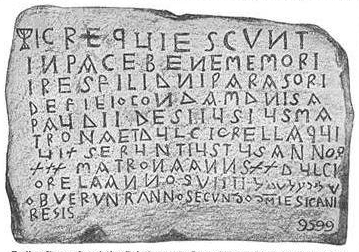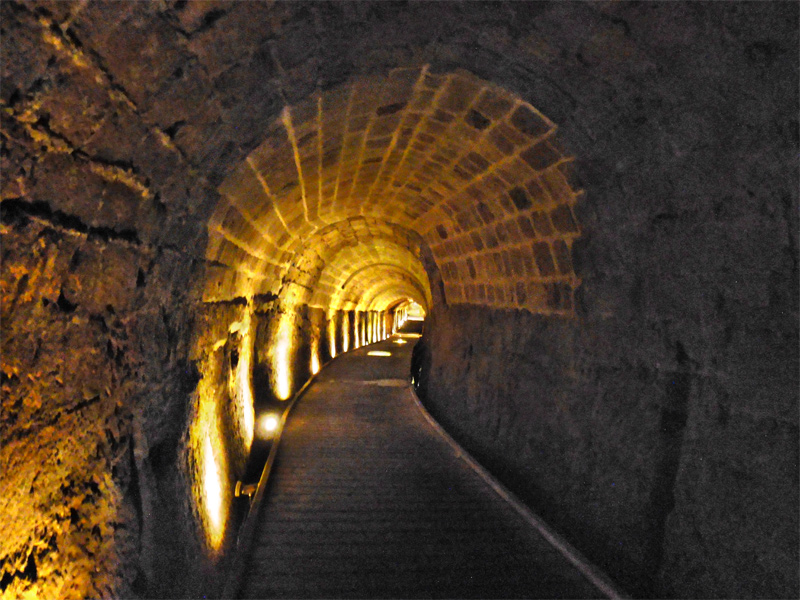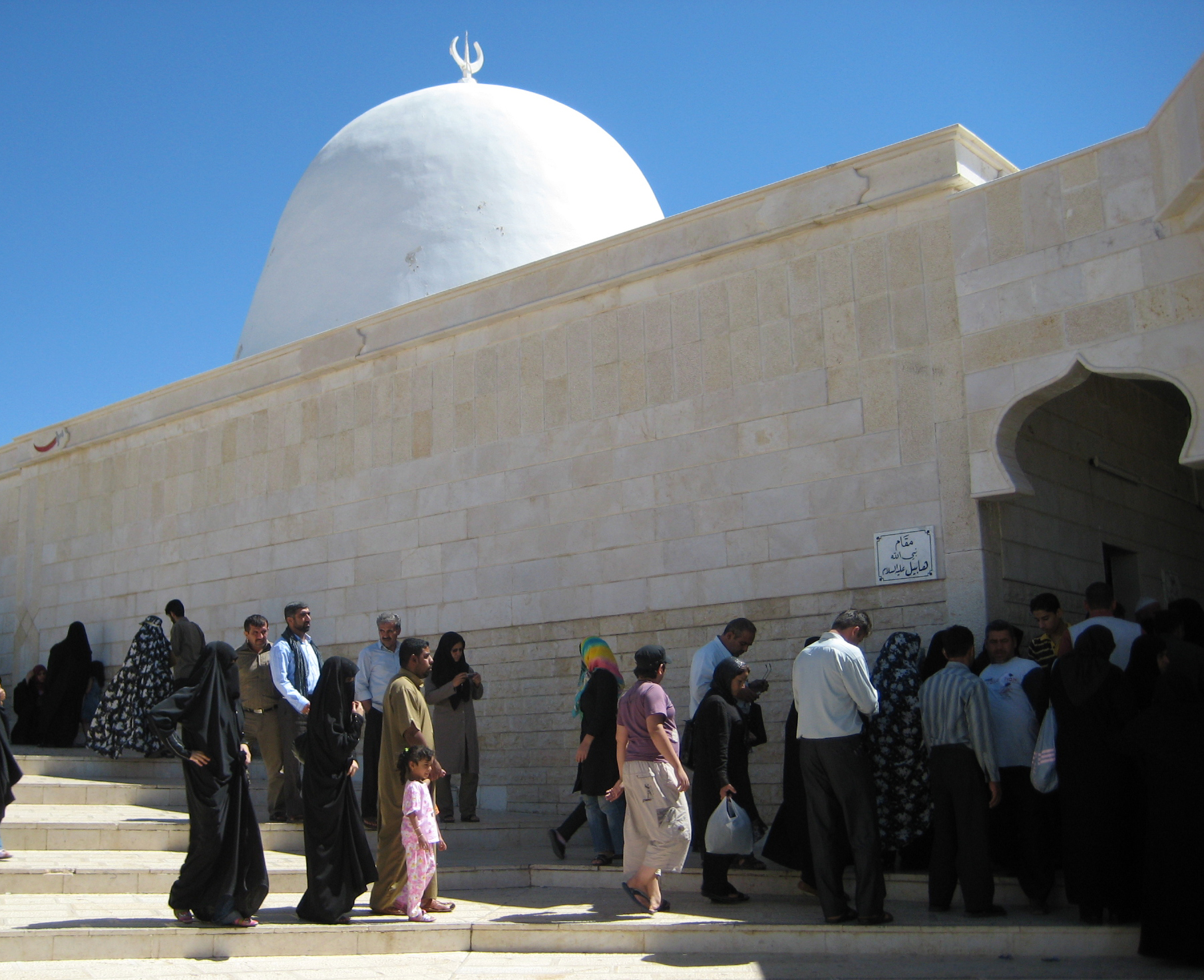|
Great Academy Of Paris
The Great Academy of Paris (''Midrash HaGadol d'Paris'') was a 13th-century Talmudic academy in Acre, established by Rabbi Jehiel of Paris. History In around 1258, Rabbi Jehiel of Paris immigrated to the Kingdom of Jerusalem from Northern France with several hundred students, his son Joseph following soon later. The group settled in the Crusader stronghold of Acre, where Rabbi Jehiel founded a Talmudic academy which he named the Great Academy of Paris, after the original institution he had headed in Paris. The academy intended to continue the learning traditions of the Tosafists of Northern France. One report suggests that there were 300 students learning at the academy, although this may have included members of the local community, who devoted time for daily study. The renown of the new academy of the "Sages of Acre" was so great that Rabbi Shlomo ben Adret wrote in 1280: 'It is a custom among the sages of the Holy Land and of Babylon that if a question should be asked, no ... [...More Info...] [...Related Items...] OR: [Wikipedia] [Google] [Baidu] |
Yeshiva
A yeshiva (; ; pl. , or ) is a traditional Jewish educational institution focused on the study of Rabbinic literature, primarily the Talmud and halacha (Jewish law), while Torah and Jewish philosophy are studied in parallel. The studying is usually done through daily '' shiurim'' (lectures or classes) as well as in study pairs called '' chavrusas'' ( Aramaic for 'friendship' or 'companionship'). '' Chavrusa''-style learning is one of the unique features of the yeshiva. In the United States and Israel, different levels of yeshiva education have different names. In the U.S., elementary-school students enroll in a '' cheder'', post- bar mitzvah-age students learn in a '' mesivta'', and undergraduate-level students learn in a '' beit midrash'' or '' yeshiva gedola'' (). In Israel, elementary-school students enroll in a Talmud Torah or '' cheder'', post-bar mitzvah-age students learn in a ''yeshiva ketana'' (), and high-school-age students learn in a ''yeshiva gedola''. ... [...More Info...] [...Related Items...] OR: [Wikipedia] [Google] [Baidu] |
Chazal
Chazal or Ḥazal () are the Jewish sages of the Mishnaic and Talmudic eras, spanning from the final 300 years of the Second Temple period until the 7th century, or . Their authority was mostly in the field of ''Halakha'' (Jewish law) and less regarding Jewish theology. Rabbinic eras (eras of ''Halakha'') Chazal are generally divided according to their era and the major written products thereof: * '' Soferim'' ("scribes"): Sages from the period preceding Ezra the scribe and up to the '' Zugot'' era, including the men of the Great Assembly. Traditionally, the era of ''Soferim'' is assumed to have stretched from the '' Matan Torah'' ("giving of the Law"; i.e., the receipt of the Torah by Moses on Mount Sinai) to the era of the earliest ''Halakha'', including the times of Simeon the Just. * '' Zugot'' ("pairs"): Five pairs of sages from consecutive generations who lived during a period of roughly 100 years toward the end of the Second Temple era. (142BCE) * ''Tannaim'' ("t ... [...More Info...] [...Related Items...] OR: [Wikipedia] [Google] [Baidu] |
French Tosafists
French may refer to: * Something of, from, or related to France ** French language, which originated in France ** French people, a nation and ethnic group ** French cuisine, cooking traditions and practices Arts and media * The French (band), a British rock band * "French" (episode), a live-action episode of ''The Super Mario Bros. Super Show!'' * ''Française'' (film), a 2008 film * French Stewart (born 1964), American actor Other uses * French (surname), a surname (including a list of people with the name) * French (tunic), a type of military jacket or tunic * French's, an American brand of mustard condiment * French (catheter scale), a unit of measurement * French Defence, a chess opening * French kiss, a type of kiss See also * France (other) * Franch, a surname * French Revolution (other) * French River (other), several rivers and other places * Frenching (other) * Justice French (other) Justice French may refer to: * C. G ... [...More Info...] [...Related Items...] OR: [Wikipedia] [Google] [Baidu] |
French-Jewish Diaspora
The history of the Jews in France deals with Jews and Jewish communities in France since at least the Early Middle Ages. France was a centre of Jewish learning in the Middle Ages, but Persecution of Jews, persecution increased over time, including multiple expulsions and returns. During the French Revolution in the late 18th century, on the other hand, France was the first European country to Jewish emancipation, emancipate its Jewish population. Antisemitism in France, Antisemitism still occurred in cycles and reached a high in the 1890s, as shown during the Dreyfus affair, and in the 1940s, under German military administration in occupied France during World War II, Nazi occupation and the Vichy regime. Before 1919, most French Jews lived in Paris, with many being very proud to be fully assimilated into French culture, and they comprised an upscale subgroup. A more traditional Judaism was based in Alsace-Lorraine, which was recovered by The German Empire in 1871 and taken by F ... [...More Info...] [...Related Items...] OR: [Wikipedia] [Google] [Baidu] |
Educational Institutions Established In The 13th Century
Education is the transmission of knowledge and skills and the development of character traits. Formal education occurs within a structured institutional framework, such as public schools, following a curriculum. Non-formal education also follows a structured approach but occurs outside the formal schooling system, while informal education involves unstructured learning through daily experiences. Formal and non-formal education are categorized into levels, including early childhood education, primary education, secondary education, and tertiary education. Other classifications focus on teaching methods, such as teacher-centered and student-centered education, and on subjects, such as science education, language education, and physical education. Additionally, the term "education" can denote the mental states and qualities of educated individuals and the academic field studying educational phenomena. The precise definition of education is disputed, and there are disagreements ... [...More Info...] [...Related Items...] OR: [Wikipedia] [Google] [Baidu] |
History Of Acre, Israel
Acre ( ), known in Hebrew as Akko (, ) and in Arabic as Akka (, ), is a city in the coastal plain region of the Northern District of Israel. The city occupies a strategic location, sitting in a natural harbour at the extremity of Haifa Bay on the coast of the Mediterranean's Levantine Sea."Old City of Acre." , World Heritage Center. World Heritage Convention. Web. 15 April 2013 Aside from coastal trading, it was an important waypoint on the region's coastal road and the road cutting inland along the |
1258 Establishments In Asia
1 (one, unit, unity) is a number, numeral, and glyph. It is the first and smallest positive integer of the infinite sequence of natural numbers. This fundamental property has led to its unique uses in other fields, ranging from science to sports, where it commonly denotes the first, leading, or top thing in a group. 1 is the unit of counting or measurement, a determiner for singular nouns, and a gender-neutral pronoun. Historically, the representation of 1 evolved from ancient Sumerian and Babylonian symbols to the modern Arabic numeral. In mathematics, 1 is the multiplicative identity, meaning that any number multiplied by 1 equals the same number. 1 is by convention not considered a prime number. In digital technology, 1 represents the "on" state in binary code, the foundation of computing. Philosophically, 1 symbolizes the ultimate reality or source of existence in various traditions. In mathematics The number 1 is the first natural number after 0. Each natural number, ... [...More Info...] [...Related Items...] OR: [Wikipedia] [Google] [Baidu] |
13th-century Establishments In The Kingdom Of Jerusalem
The 13th century was the century which lasted from January 1, 1201 (represented by the Roman numerals MCCI) through December 31, 1300 (MCCC) in accordance with the Julian calendar. The Mongol Empire was founded by Genghis Khan, which stretched from Eastern Asia to Eastern Europe. The conquests of Hulagu Khan and other Mongol invasions changed the course of the Muslim world, most notably the Siege of Baghdad (1258) and the destruction of the House of Wisdom. Other Muslim powers such as the Mali Empire and Delhi Sultanate conquered large parts of West Africa and the Indian subcontinent, while Buddhism witnessed a decline through the conquest led by Bakhtiyar Khilji. The earliest Islamic states in Southeast Asia formed during this century, most notably Samudera Pasai. The Kingdoms of Sukhothai and Hanthawaddy would emerge and go on to dominate their surrounding territories. Europe entered the apex of the High Middle Ages, characterized by rapid legal, cultural, and religious evo ... [...More Info...] [...Related Items...] OR: [Wikipedia] [Google] [Baidu] |
List Of Burial Places Of Biblical Figures
The following is a list of burial places attributed to Abrahamic figures according to various religious and local traditions. The locations listed are based on locations mentioned in the text of the Bible or oral traditions of indigenous peoples. Many sites have been transmitted from generation to generation and there are historical accounts from travelers which state their existence. Figures mentioned in the Torah Figures mentioned in the Nevi'im (Prophets) Figures mentioned in the Ketuvim (Writings) Figures mentioned in the New Testament *Umayyad Mosque, Damascus – John the Baptist (burial site recognised by both Christians and Muslims) * Basilica of St. John – original burial site of Saint John *Akeldama, Jerusalem – Judas Iscariot * Saint Mark's Coptic Orthodox Cathedral (Alexandria) – Saint Mark * Tomb of the Virgin Mary (in Catholic tradition, Mary was assumed to heaven and has no tomb) * Abbey of Santa Giustina – Saint Luke (body) * St. Vitus Cat ... [...More Info...] [...Related Items...] OR: [Wikipedia] [Google] [Baidu] |
Acre, Israel
Acre ( ), known in Hebrew as Akko (, ) and in Arabic as Akka (, ), is a List of cities in Israel, city in the coastal plain region of the Northern District (Israel), Northern District of Israel. The city occupies a strategic location, sitting in a natural harbour at the extremity of Haifa Bay on the coast of the Mediterranean's Levantine Sea. In the Village Statistics, 1945, 1945 census Acre's population numbered 12,360; 9,890 Muslims, 2,330 Christians, 50 Jews and 90 classified as "other".Department of Statistics, 1945, p4Government of Palestine, Department of Statistics. ''Village Statistics, April, 1945.'' Quoted in Hadawi, 1970, p40 Acre Prison, Acre's fort was converted into a jail, where members of the Jewish underground were held during their struggle against the Mandate authorities, among them Ze'ev Jabotinsky, Shlomo Ben-Yosef, and Dov Gruner. Gruner and Ben-Yosef were executed there. Other Jewish inmates were freed by members of the Irgun, who Acre Prison break, brok ... [...More Info...] [...Related Items...] OR: [Wikipedia] [Google] [Baidu] |
Holy Land
The term "Holy Land" is used to collectively denote areas of the Southern Levant that hold great significance in the Abrahamic religions, primarily because of their association with people and events featured in the Bible. It is traditionally synonymous with what is known as the Land of Israel ( Zion) or the Promised Land in a biblical or religious context, or as Canaan or Palestine in a secular or geographic context—referring to a region that is mostly between the Mediterranean Sea and the Jordan River. Today, it chiefly overlaps with the combined territory of the modern states of Israel and Palestine. Most notable among the religions that tie substantial spiritual value to the Holy Land are Judaism, Christianity, and Islam. A considerable part of the Holy Land's importance derives from Jerusalem, which is regarded as extremely sacred in and of itself. It is the holiest city in Judaism and Christianity and the third-holiest city in Islam (behind Mecca and Medina in ... [...More Info...] [...Related Items...] OR: [Wikipedia] [Google] [Baidu] |
Guide Book
A guide book or travel guide is "a book of information about a place designed for the use of visitors or tourists". It will usually include information about sights, accommodation, restaurants, transportation, and activities. Maps of varying detail and historical and cultural information are often included. Different kinds of guide books exist, focusing on different aspects of travel, from adventure travel to relaxation, or aimed at travelers with different incomes, or focusing on sexual orientation or types of diet. Travel guides or guide books can also take the form of travel websites. History Antiquity A forerunner of the guidebook was the ''periplus'', an itinerary from landmark to landmark of the ports along a coast. A ''periplus'' such as the ''Periplus of the Erythraean Sea'' was a manuscript document that listed, in order, the ports and coastal landmarks, with approximate intervening distances, that the captain of a vessel could expect to find along a shore. This wor ... [...More Info...] [...Related Items...] OR: [Wikipedia] [Google] [Baidu] |







